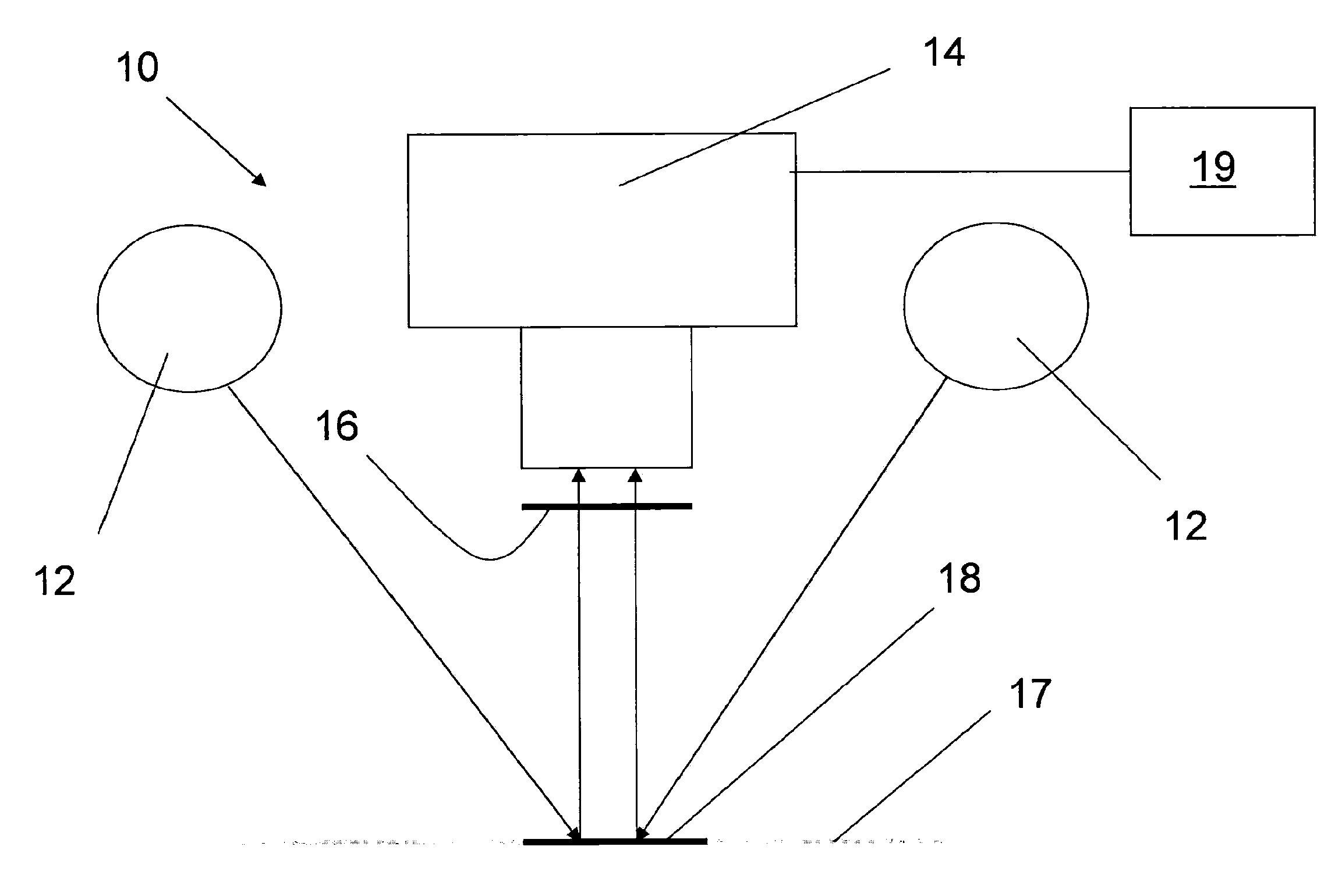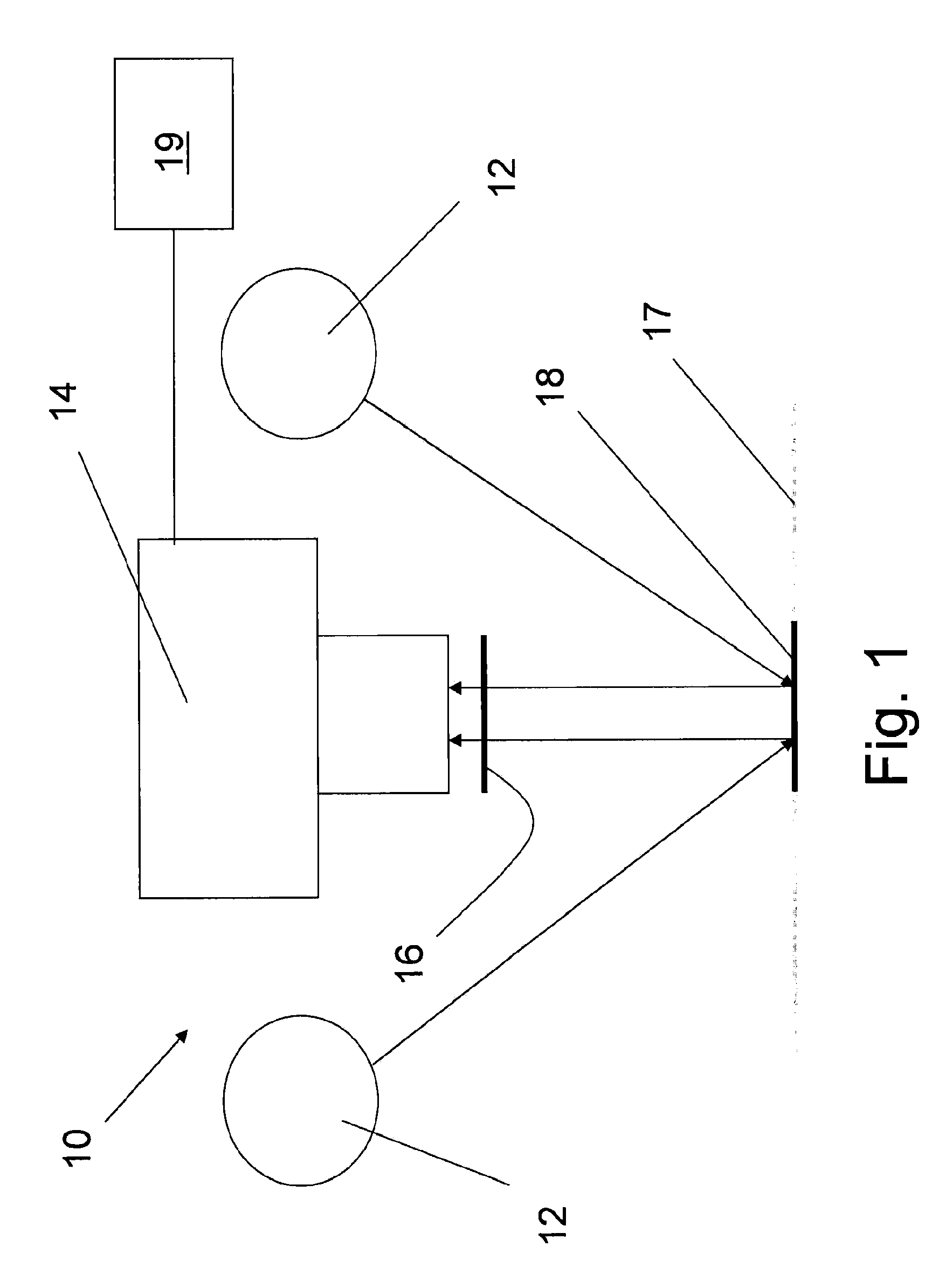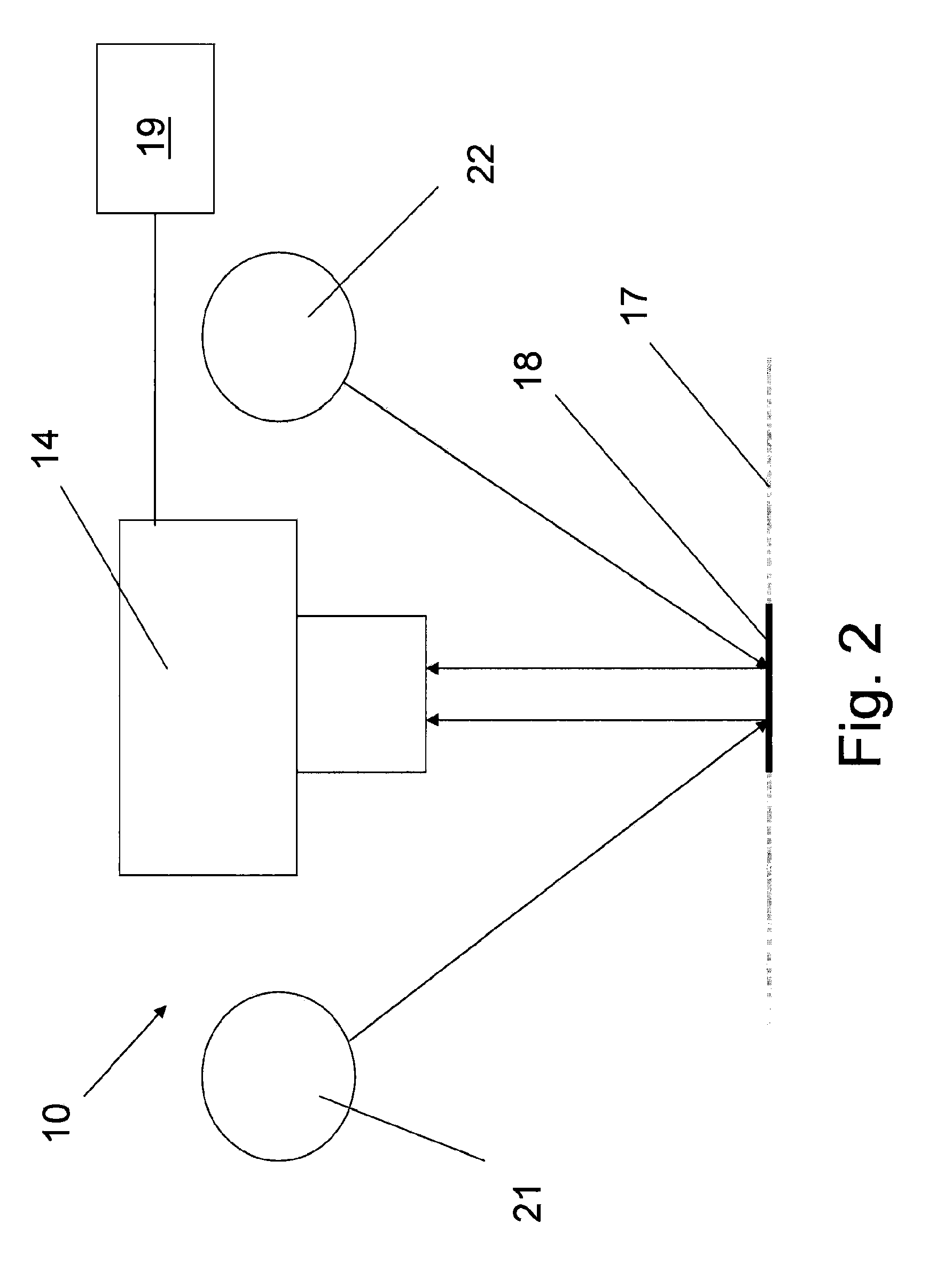Read-out method and apparatus
- Summary
- Abstract
- Description
- Claims
- Application Information
AI Technical Summary
Benefits of technology
Problems solved by technology
Method used
Image
Examples
example 1
[0059]A plurality of samples from different patients suspected of having birch pollen allergy was placed on POC assay strips, and visible read-outs were generated.
[0060]A panel of test persons (A, B, C, D) were given the read-outs for visual evaluation, the results are given in Table 1 below.
[0061]The same assay strips was analysed with a set-up according to the invention, and the result was an unambiguous reading. The result is given in Table as comparison to the visual assessments.
example 2
[0062]FIG. 3 is a graph showing a comparison between two experienced “visual readers”, assessing the same test devices, where the readings are made on a scale of 0-12, and each device having 12 spots. The reading of Visual Reader 1 is plotted against the reading of the same test device by Visual reader 2. To present the visual (integer) values, noise has been added to spread out the values to show the density of reading in different areas of the diagram. This figure clearly illustrates the degree of uncertainty in visual readings, and shows the need of ways and means to obtain more consistent readings in order to avoid misinterpretations.
example 3
[0063]FIG. 4 is a graph showing readings by the device according to the invention plotted against readings made by an experienced visual reader.
[0064]The Table below shows averages of about 1000 readings (from FIG. 3) for a visual reader and an automated reader according to the invention. The table shows the mean value from the automated reader (AR) according to the invention for each of the visual readings (VR) of integer values 0 to 11.
VR01234567891011AR0.220.932.082.953.944.795.816.447.428.439.5610.98
[0065]This illustrates that the method and device according to the invention is comparable with experienced visual readers.
PUM
 Login to view more
Login to view more Abstract
Description
Claims
Application Information
 Login to view more
Login to view more - R&D Engineer
- R&D Manager
- IP Professional
- Industry Leading Data Capabilities
- Powerful AI technology
- Patent DNA Extraction
Browse by: Latest US Patents, China's latest patents, Technical Efficacy Thesaurus, Application Domain, Technology Topic.
© 2024 PatSnap. All rights reserved.Legal|Privacy policy|Modern Slavery Act Transparency Statement|Sitemap



